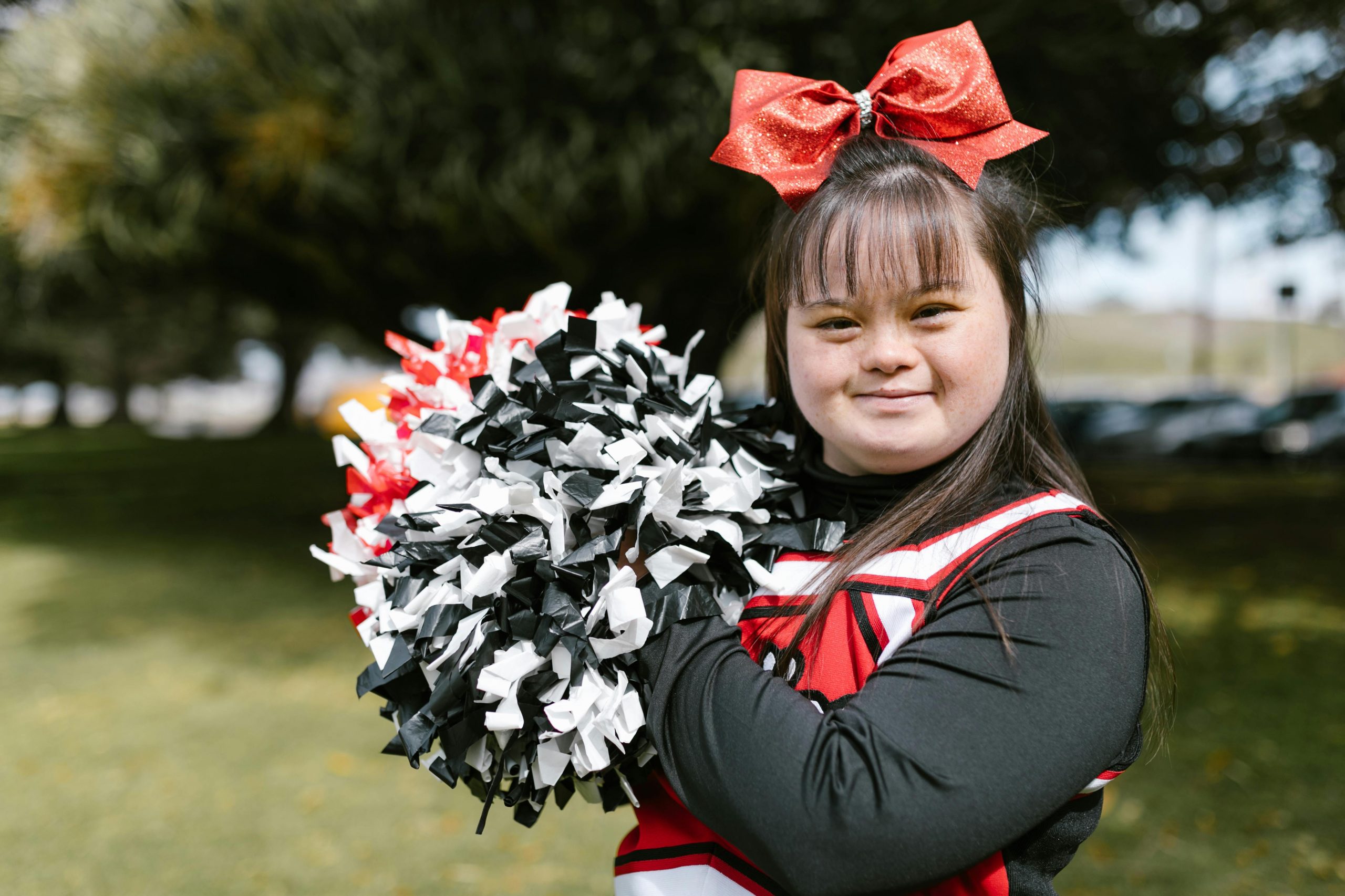
Disclaimer: This website provides health information for educational purposes only and is not a substitute for professional medical advice, diagnosis, or treatment. Always seek the guidance of a qualified healthcare provider with any questions you may have.
When it comes to developmental conditions like autism and Down syndrome, early recognition can be life-changing. The sooner a child receives the right diagnosis, the sooner they can access therapies, support systems, and education plans tailored to their needs.
While both conditions affect development, autism and Down syndrome differ significantly in cause, characteristics, and how they are diagnosed. This article explores the early signs of each, how diagnosis happens, and what parents and caregivers should watch for in the first months and years of a child’s life.
What Is Autism?
Autism Spectrum Disorder (ASD) is a lifelong neurodevelopmental condition that affects how individuals communicate, interact socially, and process information. It is referred to as a “spectrum” because autism presents differently in each individual—some may need substantial support, while others function independently.
Causes and Origins
The exact causes of autism are not yet fully understood. However, research suggests that a combination of genetic, neurological, and environmental factors contributes to its development.
- Autism tends to run in families, indicating a genetic component.
- Factors during pregnancy or shortly after birth, such as advanced parental age, low birth weight, or prenatal exposure to certain substances, may also play a role.
- It is more common in boys than in girls, with a 4:1 ratio.
Common Features of Autism
Children with autism may exhibit a range of behaviors and developmental differences. These may appear in infancy but are more often clearly noticeable between 12 and 36 months.
- Communication challenges: Delayed speech, limited vocabulary, or unusual language patterns such as echolalia (repeating others’ words). Some children may remain nonverbal.
- Nonverbal communication difficulties: Limited use of gestures (e.g., pointing, waving), reduced facial expressions, or poor understanding of body language.
- Social difficulties: Avoidance of eye contact, lack of interest in playing with others, or difficulty understanding emotions and social cues.
- Repetitive behaviors: These can include hand-flapping, rocking, spinning objects, or strict adherence to routines and resistance to change.
- Sensory processing differences: Children may overreact or underreact to sensory stimuli such as sounds, textures, lights, or smells.
Autism has no physical signs, and its diagnosis relies on observing developmental behaviors over time and using standardized screening tools. Early diagnosis can lead to effective intervention strategies that help children build communication, social, and learning skills.
What Is Down Syndrome?

Down syndrome is a genetic condition caused by the presence of an extra full or partial copy of chromosome 21, also known as Trisomy 21. This additional genetic material disrupts normal development, leading to a combination of physical traits and intellectual delays.
Causes and Origins
Down syndrome is not inherited in most cases. It occurs as a random event during the formation of reproductive cells or in early fetal development.
- Approximately 95% of cases are due to nondisjunction, where a chromosome fails to separate properly.
- Translocation and mosaicism are less common forms but can result in similar physical and cognitive traits.
- The likelihood of a baby being born with Down syndrome increases with maternal age, particularly after age 35.
Common Features of Down Syndrome
Babies with Down syndrome typically show a set of recognizable physical traits and may have specific medical and developmental needs.
- Facial features: A flat facial profile, small nose, almond-shaped eyes that slant upward, and a short neck.
- Hypotonia (low muscle tone): Leads to delays in physical development, such as rolling over, sitting up, and walking.
- Cognitive and intellectual development: Most individuals have mild to moderate intellectual disability, affecting memory, learning, and problem-solving.
- Speech and language delays: These often require early speech therapy to improve articulation and communication.
- Medical concerns: Some children may have congenital heart defects, hearing loss, or thyroid issues, which are typically managed with ongoing medical care.
Down syndrome can be identified before birth through genetic screening and confirmed at birth through a karyotype test, which reveals the presence of an extra chromosome 21.
Autism vs Down Syndrome: What Are the Key Differences?
Although autism and Down syndrome are both developmental conditions, they differ significantly in their causes, appearances, diagnosis methods, and how they affect behavior and learning.
| Feature | Autism Spectrum Disorder | Down Syndrome |
| Cause | Multifactorial—likely genetic and environmental | Extra full or partial copy of chromosome 21 (Trisomy 21) |
| Diagnosis Method | Based on behavioral observation, developmental screening, and evaluation | Genetic testing (karyotype) or prenatal screenings |
| Timing of Diagnosis | Typically between 18 months and 3 years | Often diagnosed prenatally or immediately after birth |
| Physical Appearance | No consistent physical characteristics | Distinct facial and body features recognizable at birth |
| Cognitive Profile | Highly variable—can range from gifted to significantly delayed | Generally consistent with mild to moderate intellectual delay |
| Speech Development | May be significantly delayed, absent, or atypical | Typically delayed, but with steady progress through intervention |
| Social Behavior | May avoid eye contact and social interaction; prefers routines | Usually sociable and affectionate; enjoys interaction |
| Co-occurrence | Can occur independently or alongside other conditions | May co-occur with autism or medical issues in a minority of cases |
How Early Can You Detect Down Syndrome?
Prenatal Screening and Diagnosis
Most cases of Down syndrome are identified before birth through:
- Ultrasound (Nuchal translucency test): Measures fluid at the back of the baby’s neck.
- Maternal blood tests: Look for markers of chromosomal conditions.
- Non-invasive prenatal testing (NIPT): Screens fetal DNA in the mother’s blood.
- Amniocentesis or chorionic villus sampling (CVS): Confirms the presence of Trisomy 21.
Postnatal Signs
At birth, many babies with Down syndrome display clear physical traits. A blood test called a karyotype confirms the extra chromosome.
Physical Features Often Present at Birth:
- Flattened facial features
- Upward slanting eyes
- Short neck
- Single crease across the palm
- Poor muscle tone (floppy baby)
These signs prompt doctors to conduct further tests immediately.
How Early Can Autism Be Detected?

Unlike Down syndrome, autism cannot be diagnosed at birth. Instead, signs typically emerge in early childhood—often after the first year of life.
Early Signs of Autism (12–24 Months)
Watch for:
- No response to name by 12 months
- Lack of pointing or showing by 14 months
- No single words by 16 months
- No two-word phrases by 24 months
- Limited eye contact or social smiling
- Unusual movements (rocking, hand-flapping)
Autism Screening Tools
- Modified Checklist for Autism in Toddlers (M-CHAT): Administered at 18 and 24-month well-child visits.
- ADOS (Autism Diagnostic Observation Schedule): A more detailed assessment if autism is suspected.
- Developmental Pediatrician Evaluation: Often required for formal diagnosis.
Why Are the Diagnoses So Different?
Down Syndrome:
- Concrete cause (extra chromosome)
- Diagnosed via genetic testing
- Often confirmed before or shortly after birth
Autism:
- Behavior-based diagnosis
- Symptoms evolve over time
- Requires detailed observation and developmental tracking
Because autism is identified through behavior rather than biology, it typically requires months or even years of observation before a formal diagnosis is made.
What Should Parents Watch for?
If you’re concerned about your child’s development, the following checklist can help you determine whether you should talk to your pediatrician:
Signs to Monitor:
- Lack of eye contact or social smile by 6 months
- No babbling or pointing by 12 months
- Unusual motor behaviors (rocking, spinning objects)
- Flattened facial features or low muscle tone at birth
- Not responding to their name
- Regression (loss of speech or social skills previously gained)
Early intervention makes a major difference. Whether it’s autism, Down syndrome, or both, starting therapy and support services early can improve long-term outcomes.
What Are the Next Steps After Concern?
If you’ve noticed delays or unusual behaviors, it’s natural to feel overwhelmed. However, there are clear steps you can take to move forward and get the answers you need.
If You Suspect Down Syndrome:
- Talk to your pediatrician immediately: If your child wasn’t diagnosed prenatally or at birth but you notice physical signs consistent with Down syndrome, a pediatrician can conduct an initial evaluation.
- Request a genetic test: A chromosomal analysis (karyotype test) confirms the presence of an extra chromosome 21. This test is highly accurate and typically ordered through a pediatrician or geneticist.
- Initiate early intervention: With a confirmed diagnosis, your child becomes eligible for early intervention programs including physical therapy, speech-language therapy, and family support services—often starting within the first few months of life.
If You Suspect Autism:
- Bring up your concerns at your child’s well-child visit: Pediatricians use tools like developmental milestone checklists and the M-CHAT to screen for autism, typically at 18 and 24 months.
- Request a developmental screening: If your child does not pass the initial screening, your pediatrician should refer you to a specialist for a full evaluation.
- Get a formal diagnostic assessment: A developmental pediatrician, child psychologist, or neurologist will conduct a detailed assessment, possibly including the ADOS (Autism Diagnostic Observation Schedule), to determine if your child is on the autism spectrum.
- Start early intervention as soon as possible—even without a formal diagnosis: In many regions, children can begin receiving services based on observed delays rather than a confirmed medical label.
Early Interventions: Why Timing Is Critical
Early intervention refers to a system of services and support available to young children with developmental delays and their families. These services are most effective when started during the brain’s formative years—from birth to age 5—when neural connections are rapidly developing.
Why Early Intervention Matters:
- Promotes better long-term outcomes: Children who receive early support tend to make greater gains in language, cognitive, and social-emotional development.
- Improves school readiness: Early therapy can better prepare children to succeed in preschool and kindergarten environments.
- Reduces need for more intensive services later: Early gains often reduce the reliance on special education or long-term therapy.
- Empowers families: Parents and caregivers receive education, tools, and emotional support to better meet their child’s unique needs.
Early Services May Include:
- Speech and Language Therapy: Focuses on improving verbal communication, understanding, and nonverbal skills like gestures and facial expressions. Beneficial for both autism and Down syndrome.
- Occupational Therapy (OT): Helps children build skills needed for daily life, such as feeding, dressing, and playing. Also addresses sensory processing issues common in autism.
- Physical Therapy (PT): Especially important for children with low muscle tone (common in Down syndrome), physical therapy improves coordination, posture, and gross motor skills like walking.
- Applied Behavior Analysis (ABA): A data-driven, individualized approach widely used for autism. It helps children develop positive behaviors and reduce challenging ones through structured teaching.
- Developmental and Educational Support: Many children qualify for Early Intervention programs through local school systems or government-funded agencies. These programs often provide Individualized Family Service Plans (IFSPs) and, later, Individualized Education Programs (IEPs).
When Do Services Begin?
- For Down Syndrome: Services typically begin shortly after birth, once a diagnosis is confirmed.
- For Autism: Services generally start after a formal or suspected diagnosis—often between ages 2 and 4—but earlier intervention is possible based on delays alone.
In Summary
Autism and Down syndrome are very different in origin, presentation, and diagnosis. Down syndrome often comes with visible physical signs and is typically diagnosed at birth or prenatally. Autism, on the other hand, is a behavioral diagnosis that unfolds as a child grows.
Knowing the early signs—both typical and subtle—empowers parents to seek help when it matters most. Whether it’s through routine screenings or specific parental concerns, catching delays early opens the door to essential therapies and services that can dramatically improve a child’s quality of life.